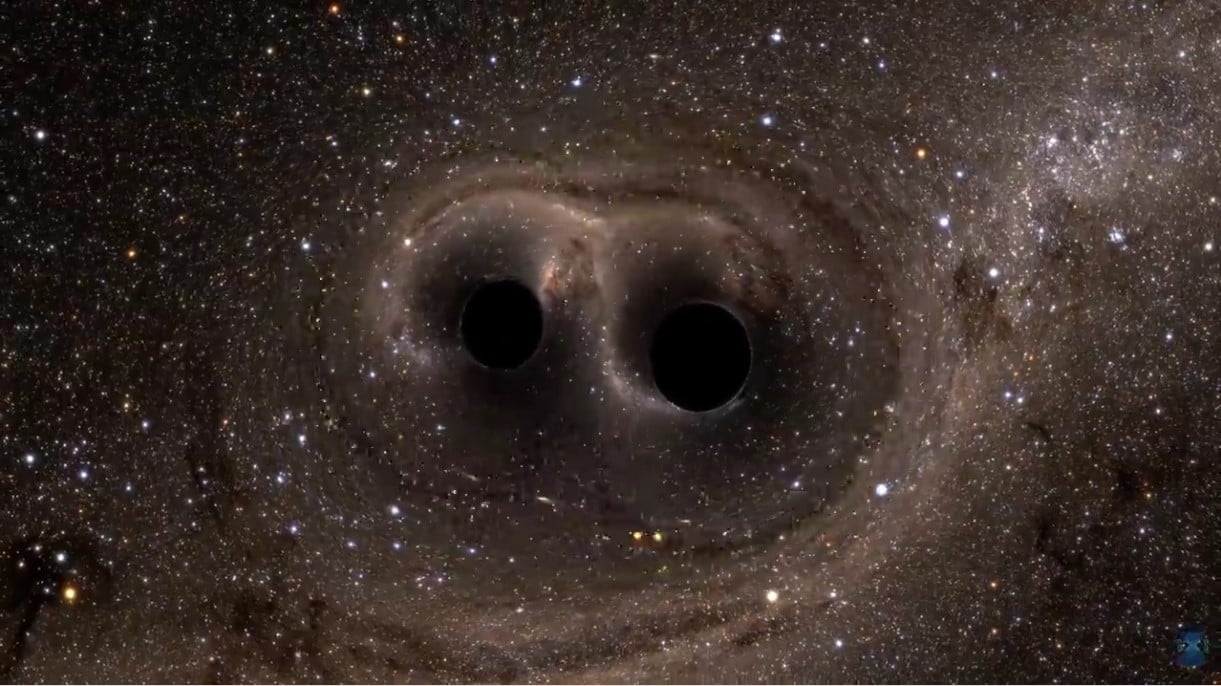Gravitational waves were detected for the first time in 2016, and have since allowed researchers to learn more about the origin of the universe and unveil its well-hidden secrets. Gravitational waves are of such huge significance to science that humanity could use them to track back to all the great events, including the Big Bang event itself. Now, a group of researchers studying gravitational waves, found that there is a gravitational wave mark that allows researchers to detect them without as much effort, even after they have already passed by a long time ago.
The Laster Interferometer Gravitational-Wave Observatory (LIGO) watches the universe for the most recent gravitational waves detectable from Earth, but a new study shows that those gravitational wave marks leave “plenty of memories” that lets us detect them even after they have already passed.
“That gravitational waves can leave permanent changes to a detector after the gravitational waves have passed is one of the rather unusual predictions of general relativity,” doctoral candidate Alexander Grant, lead author of study published in the journal Physical Review D, said in a statement.
Each new gravitational wave mark discovery allows us to use the theory of general relativity and learn more about the wave properties. According to the researchers, the properties of the waves help them learn about the Cosmic Microwave Background, a portion of gravitation left after the Big Bang occurred.
“We didn’t anticipate the richness and diversity of what could be observed,” said Éanna Flanagan, the Edward L. Nichols Professor and chair of physics and professor of astronomy.
“What was surprising for me about this research is how different ideas were sometimes unexpectedly related,” said Grant. “We considered a large variety of different observables, and found that often to know about one, you needed to have an understanding of the other.”
The researchers found three instances worth observing which reveal the properties of gravitational waves, even in the flat region of spacetime. The first observable, called “curve deviation” shows how much two observers that are accelerating, split one from another as compared to how observers with the same accelerations split one from another in a flat space unaffected by gravitational waves.
The second observable, “holonomy,” is retrieved through observing linear and angular momentum of particles, while the third observable shows how gravitational waves influence relative displacement of two particles in the instance where one of them has an intrinsic spin.
The researchers wrote in their study that detecting the holonomy observable is extremely challenging because it would require measurement of “local curvature of spacetime (potentially by carrying around small gravitational wave detectors themselves).” That said, LIGO wouldn’t be able to detect this because the holonomy observables would be too far out of reach for its instruments, at least at the moment. Recently, researchers announced that LIGO detected a collision between a black hole and neutron star for the first time, which released a tremendous amount of energy into space.
“But we’ve seen a lot of exciting things already with gravitational waves, and we will see a lot more. There are even plans to put a gravitational wave detector in space that would be sensitive to different sources than LIGO,” Flanagan said.





